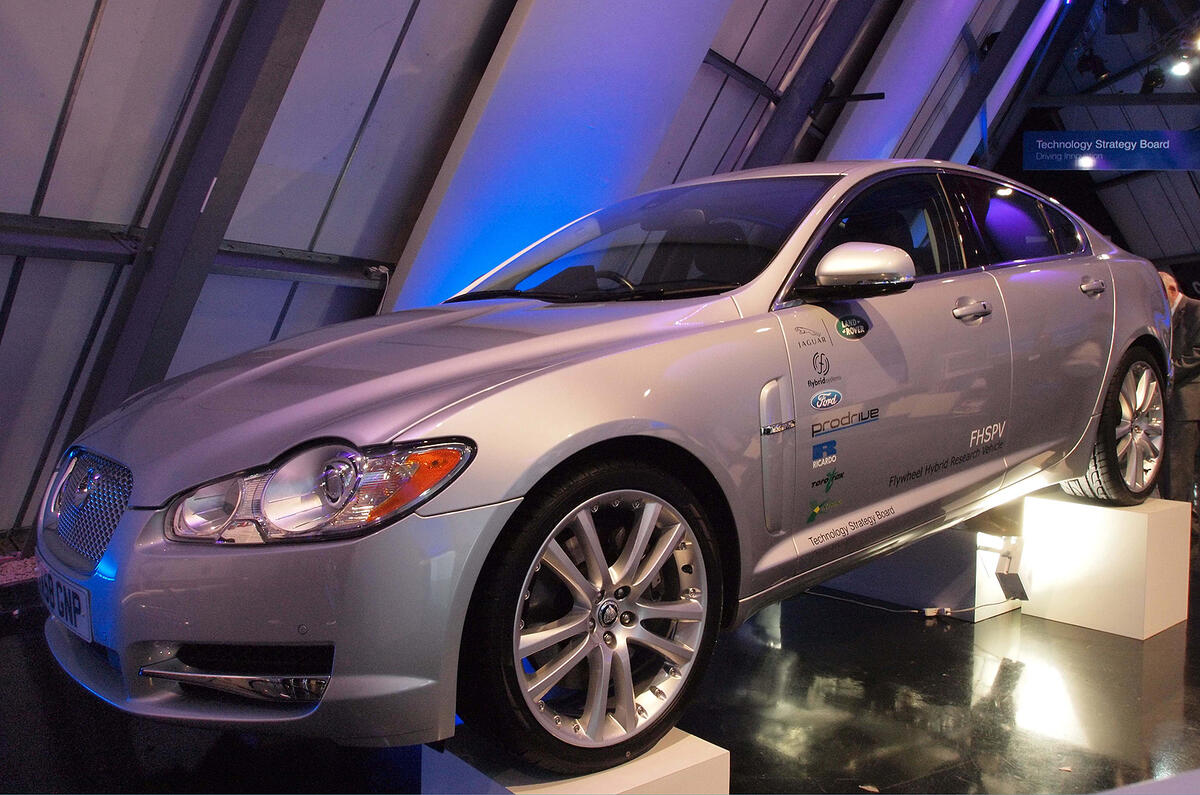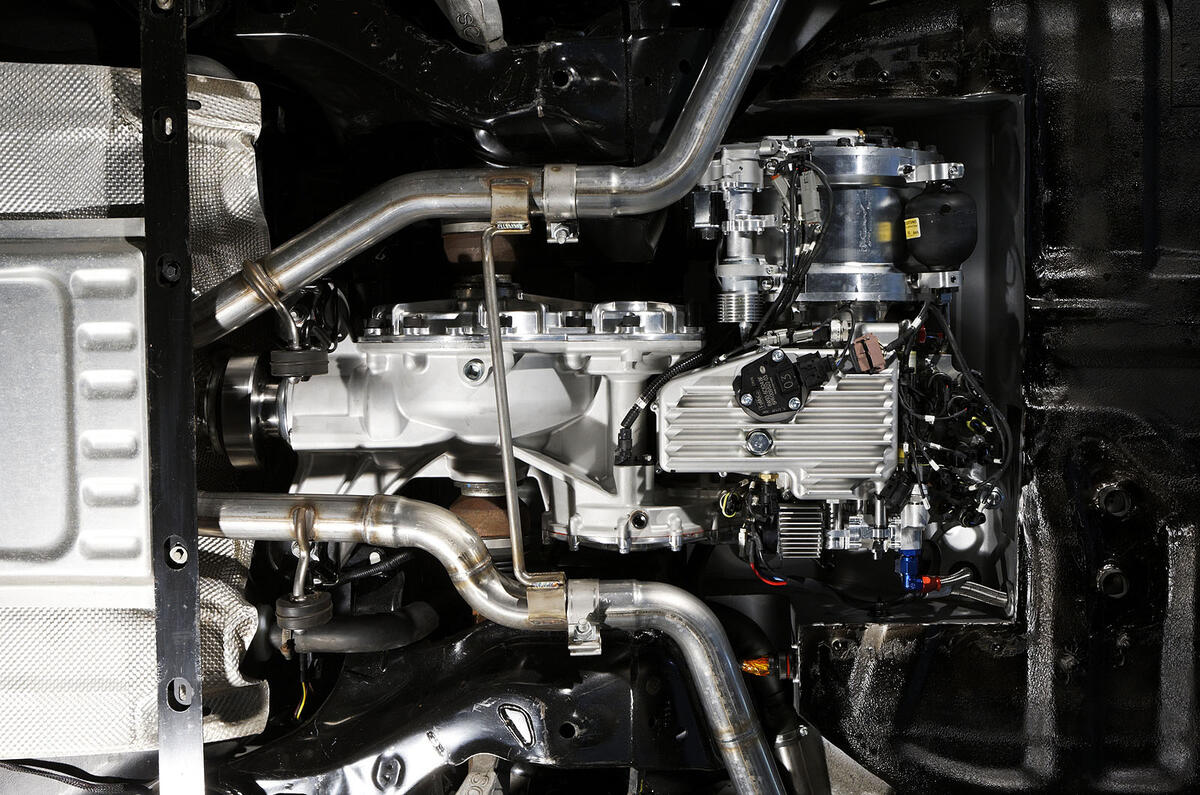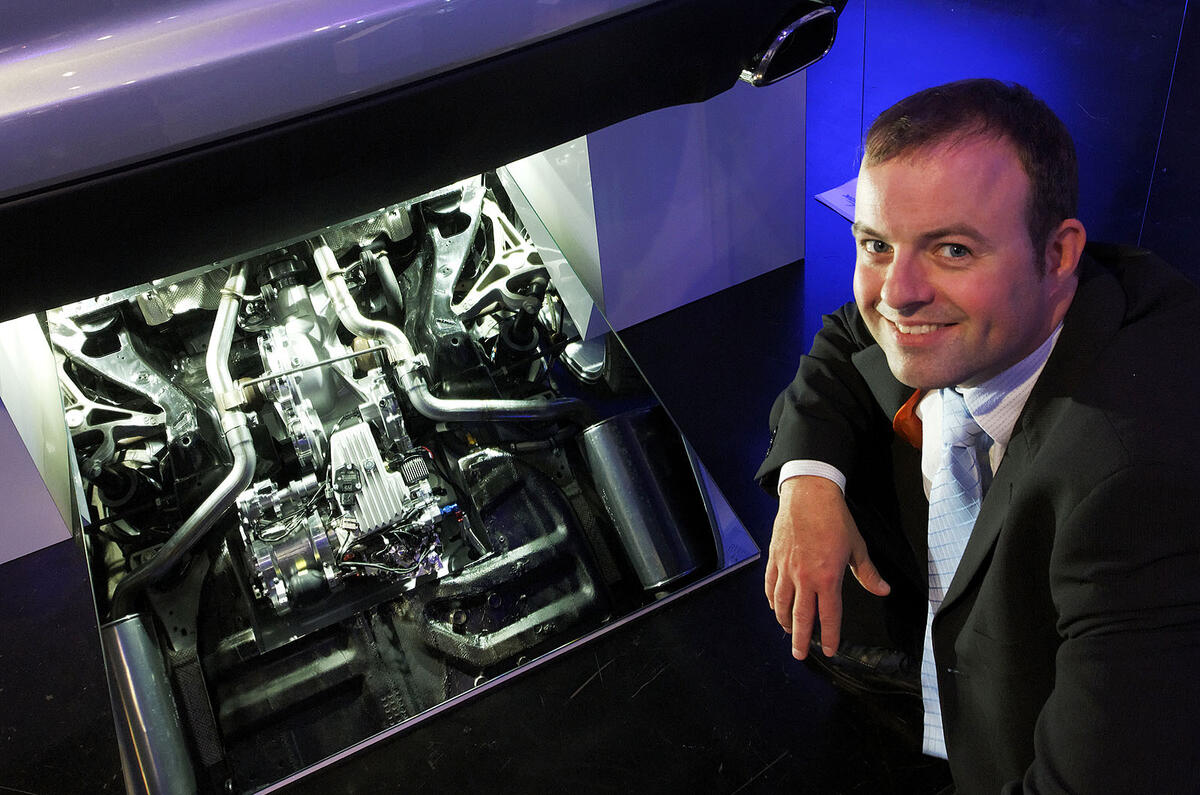Jaguar is testing a British-engineered flywheel hybrid that promises an 80bhp power boost and up to a 20 per cent fuel economy improvement.
Packaged into the rear axle of an XF test prototype revealed at this week’s Low Carbon Vehicle event at Millbrook, the hybrid features components from British engineering specialists Flybrid Systems, Torotrak, Xtrac and Prodrive, plus input from Ricardo, and is being evaluated as an alternative to battery hybrids for storing waste energy during braking.
See the pics of the Jaguar XF prototype and the technology
The £3m project is dubbed the FHSPV — Flywheel Hybrid System for Premium Vehicles — and is funded to the tune of around £2.2m by the government’s Technology Strategy Board.
“The FHSPV is really an engineering due diligence exercise,” says the project’s engineer Daniel Loftus. “We need to look at mechanical flywheels and see how they compare with electric hybrids. And then see if they have a production future.”
The composite flywheel is driven through a Torotrak/Xtrac CVT gearbox and spins at up to 60,000rpm to store a peak of 60kW, equivalent to 80bhp. A computer controls the flow of power from and to the flywheel, which can spin-up and deliver a boost in any part of the driving cycle, including performance on the move, although there’s only enough energy to deliver the peak 80bhp for around seven seconds.
Read Autocar's drive and tech story on the 50g/km Jaguar XJ Limo Green concept
Jaguar is currently testing it in stop-start city mode, which means the flywheel gathers energy lost in braking and then delivers ‘free’ power at start-up to save fuel.
Combined with a stop-start system, Jaguar is already recording significant fuel savings of 20 per cent. There are weight, cost and engineering advantages, too, according to Jaguar. The complete system weighs in at 65kg, half the weight of a comparative hybrid, the costs are “significantly lower” and the package size smaller.
To fit the system into the XF’s rear axle assembly, however, Jag has had to fabricate a modified rear cross-member and cut away a quarter of the spare wheel well.
The FHSPV is also easily scalable to bigger and heavier cars than the XF, which would include Land Rovers. However, its production future is still unclear, particularly as the cost of battery hybrids is falling and electrical energy saving is becoming the industry standard.










Join the debate
Add your comment
Re: Jaguar's advanced XF 'flybrid'
Sorry - made a mathematical error calculating the energy capacity of the flywhee. Revised figures belowl:
So taking into account the fact the Prius/Lexus actually uses around 40% of its total capacity in order to preserve battery life, the flywheel system manages around a quarter of the energy capacity of battery hybrid.Re: Jaguar's advanced XF 'flybrid'
I think a local firm has tried this in trains in Stourbridge the ? people carrier or have I just drunk too much tonight???j
Re: Jaguar's advanced XF 'flybrid'
I'm sure it was one of the Autocar writers who said we have some of the best motoring engineers right here in the U.K. This just helps to prove he was right. I hope JLR pull it off.